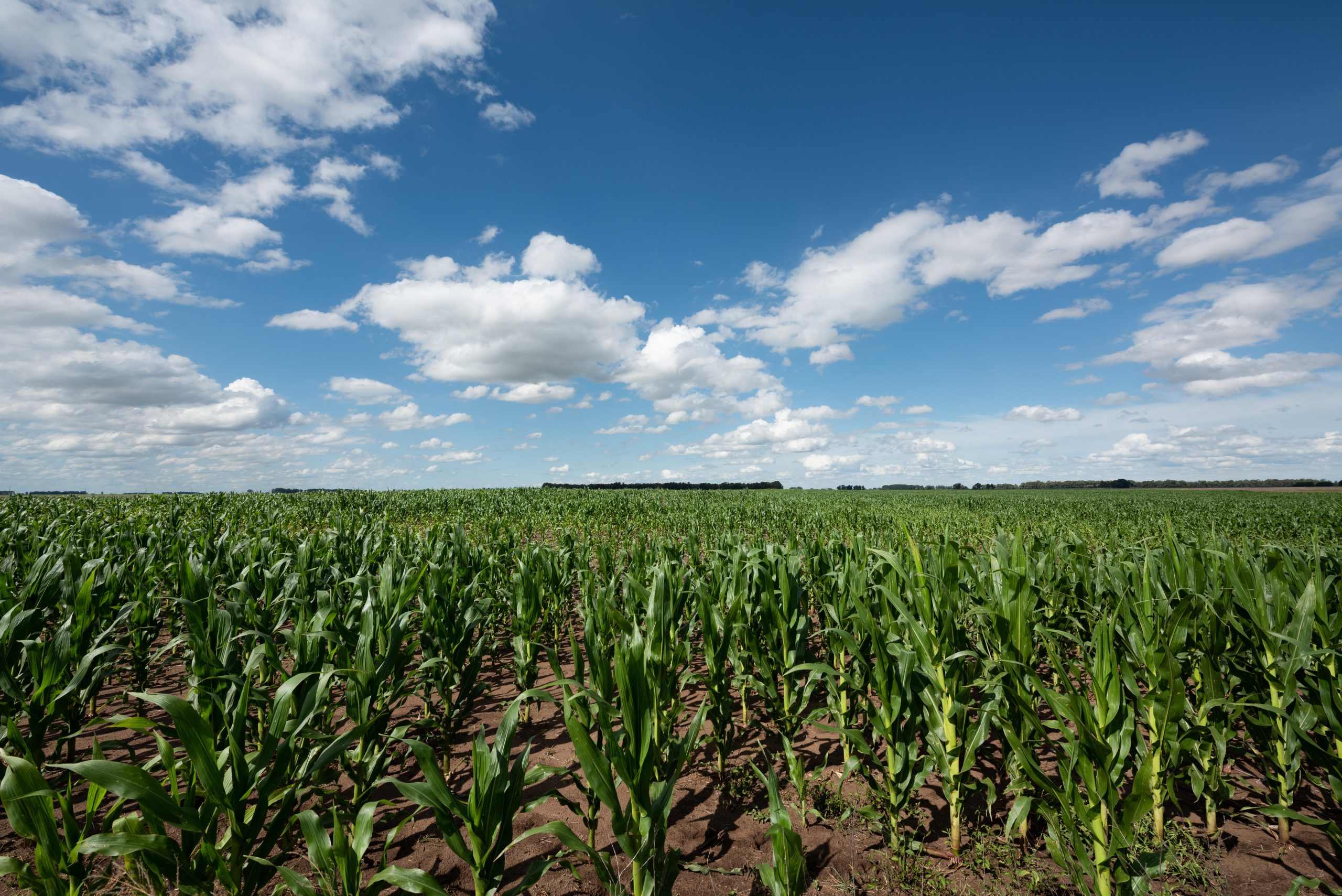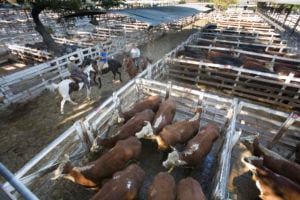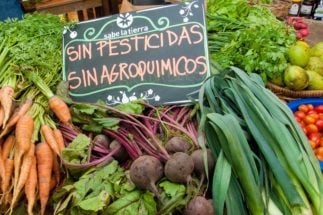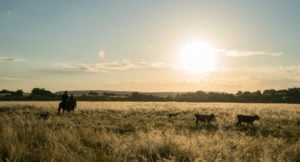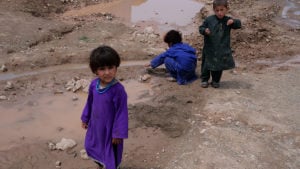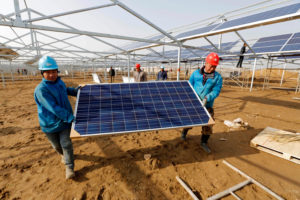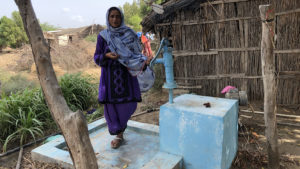This season, Argentina will plant the least amount of soy for a decade. Maize and wheat have begun to overshadow the oilseed, which has been grown less and less each year.
While in 2014, the ratio of hectares of soy sown compared to maize or wheat was 4:4, this year it fell to 1:4. Far from the “sea of soy” that was the Pampean plains in recent years, record maize production is expected this agricultural cycle, adding up to 5% more cultivated area.
A combination of factors including trade incentives and environmental damage has led producers to move away from the star crop of the early 2000s’ commodity boom. Greater crop diversity could also bring environmental benefits such as protection against increasingly extreme weather events and healthier soils.
“This is a drastic change from seven or eight years ago. Today we are facing the most varied and sustainable season of the last decade,” said agronomist Cristian Russo of the Rosario Stock Exchange, the commercial heart of Argentina’s agricultural complex.
Soybean country is over, only the myth remains
“Seven years ago the field was all soybeans and for every wheat or maize plot there were five of beans. Today we are almost one for one, the change is impressive. Crop rotation is a more efficient, cheaper and more sustainable practice,” he added.
Argentina’s new agricultural landscape
The data in a new report authored by Russo is clear. This year will see an expected increase of 7.73 million hectares of maize’s planted area, with record production of 54 million tonnes. Wheat’s footprint will also grow, with 3% more than last year, a total of 6.7 million hectares. Russo foresees a record harvest of 20 million tonnes.
Last year, Argentina planted 16.9 million hectares of soy, yielding 45 million tonnes. While it is still too early to estimate this year’s planted area, Russo said the area to be cultivated “will fall by at least 100,000 hectares more”.
According to a report by the consultancy Agrobrokers, Argentina will produce 51 million tonnes of maize this year, of which 36 million tonnes will be exported. This is more than double the amount produced in 2010 — some22.5 million tonnes, 13 million of which were exported. The same process is taking place with wheat.
Soy is moving the other way. While in 2010, Argentina harvested 54.4 million tonnes of the grain crop and exported 9.5 million tonnes, in 2021 it harvested 52 million tonnes and exported 6.3 million tonnes. The peak came in the 2015/2016 season, when production hit 58.5 million tonnes.
“It is a sustained decline, while the increase in grass crops has been phenomenal. Soybean country is over, only the myth remains,” insisted Russo.
The cost of planting maize is still a short-term constraint for sustainable agriculture, but we have all learned that the cost of unsustainable agriculture is much higher
Producers attest to the change. Mauricio Kunicic is a farmer and agricultural advisor working on a total area of around 7,000 hectares between the provinces of Santa Fe, Córdoba and Santiago del Estero. Like almost all his colleagues, at the beginning of the 2010s he turned almost exclusively to soy. “We only had 50 hectares of maize and 50 hectares of wheat, that’s how extreme it was,” he says.
Today, he grows almost equal shares of each crop and plans to move to 40% maize and 40% wheat in the near future. “Today it is more profitable to grow maize and wheat than soybeans because the farmer prefers a system that takes care of the soil,” he said.
Argentina’s soy: The economic equation
For Argentina, export taxes are a key factor for farmers when deciding which crop to grow. Changes introduced by the government of Mauricio Macri (2015-2019), which saw the elimination of taxes on corn and wheat but left a 30% levy on soybeans in place, explain the changes.
30%
The rate of tax levied on Argentine soy exports
“When Macri lowered the taxes on corn and wheat, everything started to change. In reality, we went back to the traditional rotation, because the years of soybean monoculture were exceptional,” said Kunicic.
For Fernando Botta, head of the Agrobrokers consultancy firm, most producers have now abandoned soy monoculture, even if maize is a grain that requires a higher initial investment.
“The cost of planting maize is still a short-term constraint for sustainable agriculture, but we have all learned that the cost of unsustainable agriculture is much higher and we are willing to make an effort,” he said.
Alejandro Ricordi, who farms some 800 hectares in the province of Córdoba, summarised his reason for switching: “Before we only did soy, but now we do maize and wheat as well. Maize is expensive, you have to fertilise more and the seed is more expensive, but it yields a lot and takes better care of the soil.”
With higher profit margins than soy, maize could be Argentina’s new star crop.
Taking care of the soil is taking care of capital
Soy monoculture has accelerated soil erosion, a problem that affects 36% of Argentina’s land area. Producers observe this process in their fields, sometimes with financial costs.
“When you don’t stop growing soybeans, the same nutrients always leave the soil, it’s as if the soil were weakening. With many crops, everything is better tended,” Ricordi said.
Rotation improves the soil andallows better yields for all crops, he added.
Kunicic argues that “it was impossible” to sustain a model based on monoculture. “It brings too many diseases and weeds, something that is also improved by rotating crops because you rotate herbicides, incorporate stubble and fertilisers, and all of that adds more carbon to the system,” he said.
According to Botta, the new generation of producers understand that harming the soil for short-term gain undermines their future wellbeing.
“The Pampean plains used to be a winter grassland, which was replaced by a summer crop; soy. This had consequences,” he said, adding; “producers learned the hard way that, even if trade policies forced them into the short term, soil destruction is much more expensive in the medium and long term.”
Weeds: a powerful and expensive enemy
The emergence of weeds resistant to herbicides most commonly used to treat soy – infamously, glyphosate – has changed the economic equation for producers and complicated grain crop wellbeing.
“A lot of weed and pest problems were appearing due to non-rotation, which increased the pressure on the system. Resistant weeds are a total headache for farmers and require a lot of money to control,” Russo argued.
By contrast, maize management is simpler: “It is a very expensive crop to start, but once planted, it establishes very quickly and is a very efficient plant,” the agronomist stressed.
Kunicic said: “Today we are looking to attack weeds with tools that are not only herbicides, as with crop rotation. Rotation helps because it generates more biodiversity.”
Climate risks
In a country like Argentina, where the agro-industrial sector accounts for 24% of total economic activity, according to the Agribusiness for Argentina’s Development Foundation, maximum attention must be paid to the effects of climate change.
According to the World Bank, Argentina loses an average of US$1 billion in assets per year due to flooding. “Extreme events (floods and droughts) are the country’s main climate risks. Since 1980, the number of extreme rainfall events has tripled,” a recent World Bank report noted.
In a scenario of strong climatic variability, crop rotation lowers risks.
“This year started with a huge lack of water and yet maize production surprised us because it resisted much better than soybeans, it is a crop that withstands the lack of water better,” argued Russo.
Botta agrees and says good field management limited the impact of last season’s drought “Without rotation, it would have been much worse. Varying crops undoubtedly provides much more protection against climatic events.”
